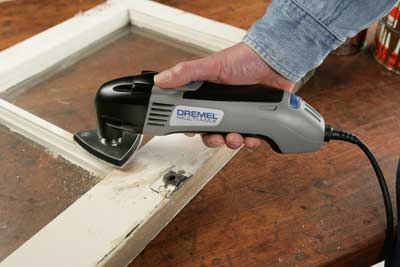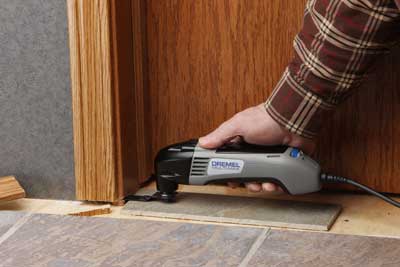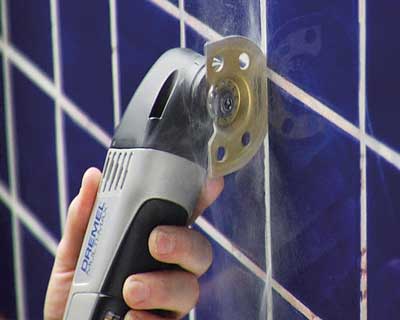
Dremel defines its tools using four adjectives: versatile, ergonomic, precise and compact. So, when the company was looking for new products it could develop about four years ago, the time seemed right for a multi-tool that would satisfy all four aims.
“Oscillating tools jumped out at us,” says John Hauter, Dremel brand manager. “At the time, Fein Power Tools was the only manufacturer of an oscillating multitool. While their MultiMaster is an excellent tool, it’s expensive and heavy. We felt we could develop a lighter weight multi-tool at a more affordable price. We wanted to bring our tool to the masses.”
And so began an extensive tool development process that has culminated in the Dremel Multi-Max, which the company launched a year ago last October. In case you’re unfamiliar with it, the Multi-Max functions as a cutting, grinding, sanding, scraping and grout removal tool. It has a rotating counterbalance mechanism in the head to control the back-and-forth motion. Various blades, scrapers and sanding accessories facilitate the tool’s five different primary functions.
Bringing this new power tool to life didn’t happen in a vacuum. Dremel understands that tools developed without end user feedback generally don’t meet “real world” expectations. So, designing the Multi-Max would be a consumer-influenced process.
“We put a variety of prototypes and 3D models in people’s hands during our tool development phase to solicit their feedback. Our product managers met three times per year with consumer groups in Florida, California and Wisconsin that we call ‘Dremel Link.’ We wanted DIYers, pro tool users and even people off the street to tell us what they liked and didn’t like about the Multi-Max,” John says. The company also wanted to know what applications tool users would want it to accomplish.
Since the Multi-Max hit stores in late 2008, several more oscillating multitools have come to market from other manufacturers. I asked John what he considers to be the standout features of the Multi-Max, compared with the competition.
“The fact that we’ve incorporated variable speed and electronic feedback into our tool means that Multi-Max costs less than some others and comes with better features. It also has the highest power-to-weight ratio of any oscillating tool on the market. Our QuickFit™ one-bolt system makes changing the accessories about twice as fast as competitive models, because you only have to loosen the fastener to change an accessory instead of removing it,” John reports.
Now that the tool has been out for a while, I asked John how Multi-Max owners are using their tools most. You might find this information helpful if you’re contemplating buying a multi-tool for your home projects. Here, in order of popularity, are the top tasks:
1) Cutting wood in tight spots or with trim moldings in place.
2) Cutting drywall for outlets and switches.
3) Flush-cutting casings and doorjambs.
4) Removing grout around tiles.
Next in line in terms of common usage is removing latex caulk and general scraping. Thanks to multitools, power scraping can now take the place of tedious and time-consuming hand scraping. That should come as good news if you’ve ever tried to remove old caulk the hard way.
John says Multi-Max hit the ground running right from its launch and was well received. Sales have been “brisk” ever since, and end users are reporting a “high level of satisfaction” with the tool.
So, where are things headed for Multi-Max?
While John couldn’t divulge Dremel’s future plans, he did suggest that, given its success so far, we should expect even more accessories that will further expand the tool’s versatility.
However that plays itself out, it seems this “jack-of-many-trades” tool is here to stay.







